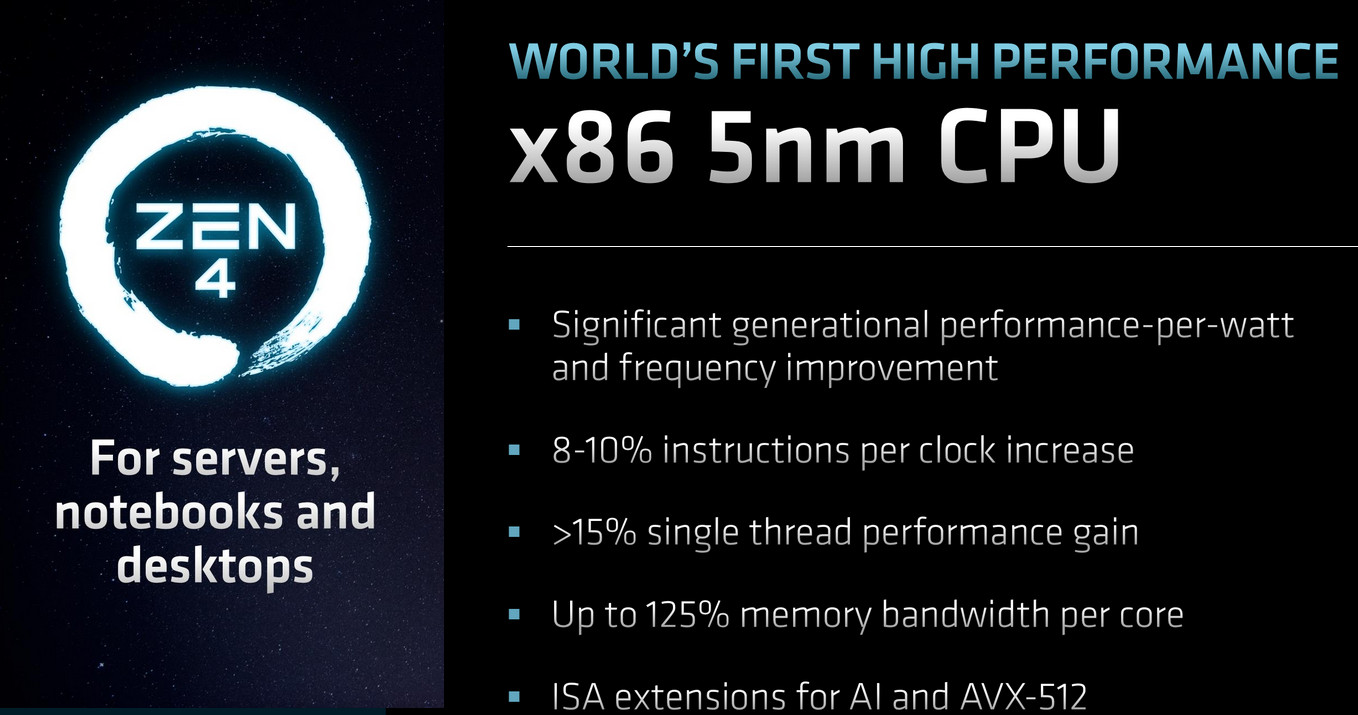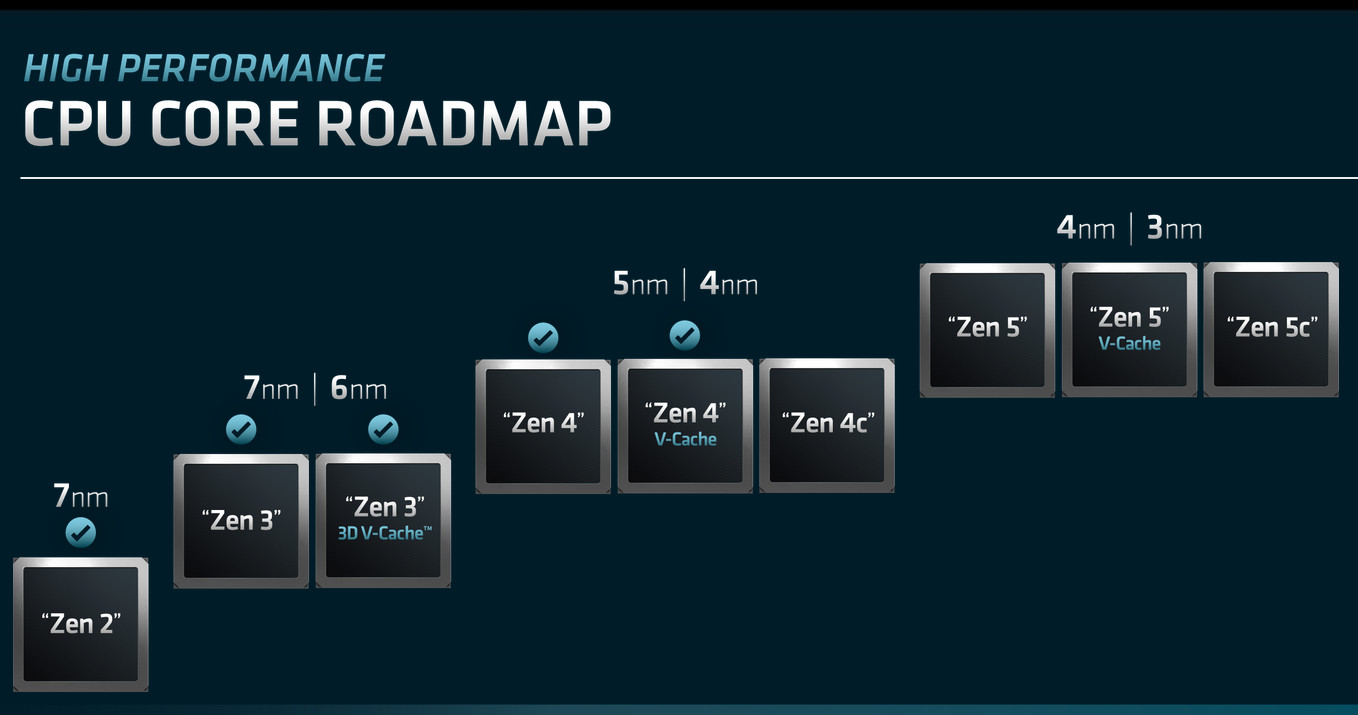At the recent Financial Analyst Day, AMD revealed a little bit more about their upcoming roadmap and there's plenty to be excited about for their next-gen CPUs and GPUs.
Some of the points that were mentioned for desktop and laptop users, those were interested in here include:
- Zen 4 CPUs later this year as the "world's first" 5nm x86 CPUs. AMD say it will give an IPC uplift of 8-10% and more than a 25% increase in performance-per-watt and a 35% overall performance increase compared to Zen 3 when running desktop applications. We can also expect Zen 4 with V-Cache, and a Zen 4c revision and some will be on a 4nm process.
- Zen 5 "Granite Ridge" CPUs planned for 2024, which is being built from the ground-up. Zen 5 will have both 4nm and 3nm designs.
- AMD RDNA 3 "Navi 3x" will bring a chiplet design, which will also have their Infinity Cache tech with a 5nm process which they claim a 50% boost in performance-per-watt compared with the previous generation. AMD said to expect Navi 3x GPUs later this year.
- A new "Phoenix Point" mobile processor coming in 2023, which will have Zen 4 along with RDNA graphics followed up by the "Strix Point" processor in 2024.
Even the Steam Deck got a passing mention, with AMD patting themselves on the back for their position amongst the main consoles since they power the Steam Deck, Xbox and PlayStation.
Some you may have missed, popular articles from the last month:
All posts need to follow our rules. For users logged in: please hit the Report Flag icon on any post that breaks the rules or contains illegal / harmful content. Guest readers can email us for any issues.
I wonder if they'll have 16 core / 32 thread CPUs with V-cache and that will compare to non V-cache ones from the game generation.
0 Likes
3 nm?! Is that even a real thing? I thought when you got that small, electrons started bleeding all over the place, and other such basic physical constraints.
Also, what are they using to etch that, gamma rays?
Also, what are they using to etch that, gamma rays?
0 Likes
I think those sizes aren't referring to literal transistors anymore, so it can be misleading.
https://en.wikipedia.org/wiki/Semiconductor_device_fabrication#Size
Last edited by Shmerl on 10 Jun 2022 at 9:39 pm UTC
https://en.wikipedia.org/wiki/Semiconductor_device_fabrication#Size
Last edited by Shmerl on 10 Jun 2022 at 9:39 pm UTC
5 Likes
I think those sizes aren't referring to literal transistors anymore, so it can be misleading.Ah, I see.
https://en.wikipedia.org/wiki/Semiconductor_device_fabrication#Size
The nanometers used to name process nodes has become more of a marketing term that has no relation with actual feature sizes nor transistor densitySo in answer to my original question, no, it's not a real thing.
Last edited by Purple Library Guy on 10 Jun 2022 at 10:58 pm UTC
1 Likes









 How to set, change and reset your SteamOS / Steam Deck desktop sudo password
How to set, change and reset your SteamOS / Steam Deck desktop sudo password How to set up Decky Loader on Steam Deck / SteamOS for easy plugins
How to set up Decky Loader on Steam Deck / SteamOS for easy plugins
See more from me